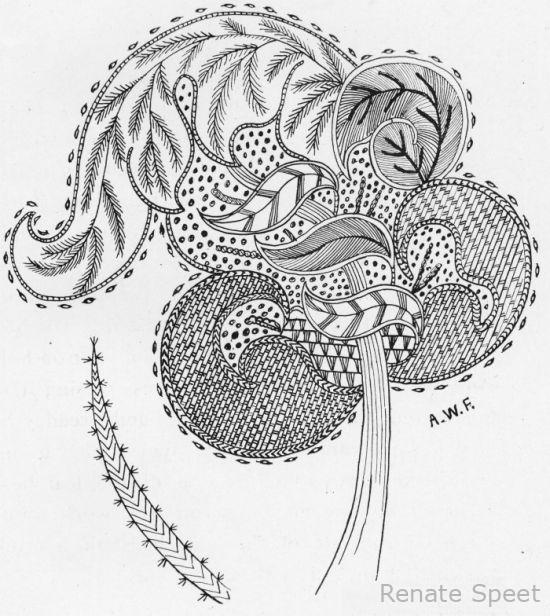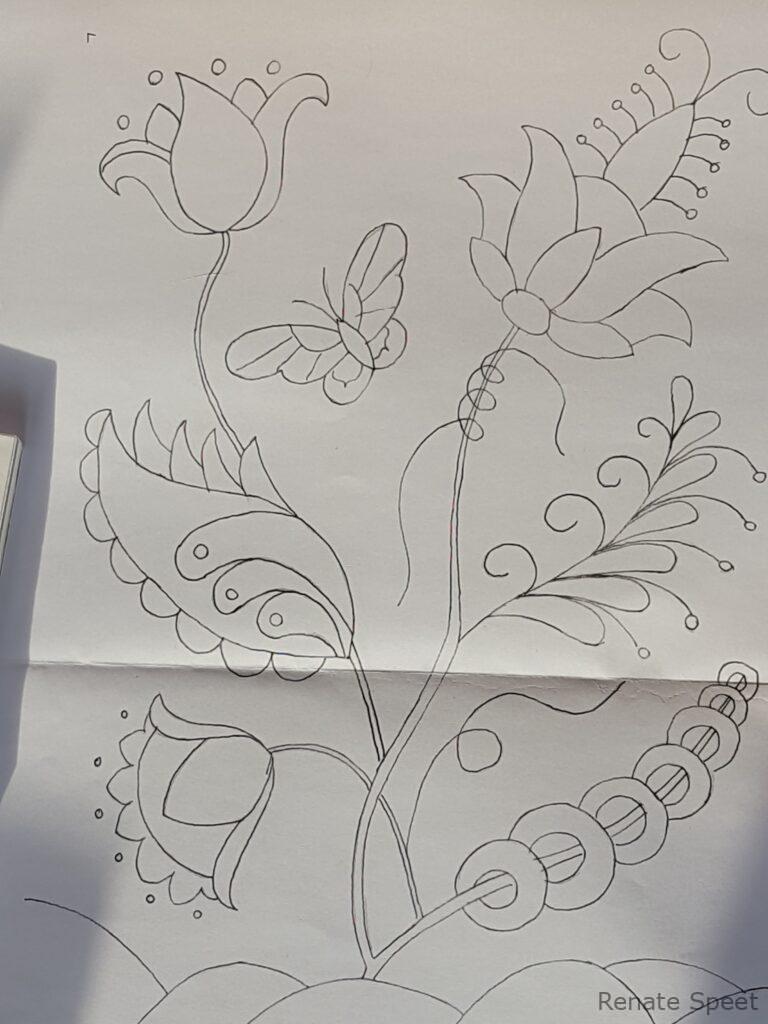My journey with the RSN Certificate began with the Jacobean crewelwork module — the very first project in the programme, and the foundation for everything that followed. At this stage I was still stitching mostly for enjoyment, not yet approaching embroidery in the more professional, deliberate way that came later with the Blackwork module. Still, Jacobean crewelwork gave me a strong grounding, and set the stage for how I would grow throughout the Certificate.
What is Jacobean Crewelwork?
Jacobean embroidery refers to a distinctive design style that became popular in England during the early 17th century, under the reign of James I. It’s known for its bold, flowing motifs: curling leaves, ornate flowers, stylized trees, and the occasional fantastical creature.
Crewelwork, on the other hand, is not a style but a technique — embroidery worked with wool thread, usually on linen twill. When the Jacobean design style is stitched using crewelwork techniques, we get what’s often called Jacobean crewelwork.
The charm of this combination lies in its flexibility. A leaf doesn’t have to be green, a flower doesn’t have to exist in real life — the goal is balance, rhythm, and decorative flow.

The RSN Brief
Like every RSN Certificate module, Jacobean crewelwork begins with a brief — a clear set of rules and requirements that shape the project. For this module, the RSN sets out both design expectations and technical stitch requirements.
On the design side, you’re asked to create:
- A composition built around a central stem with at least three different elements branching from it.
- A balanced mix of motifs — typically leaves, flowers, fruit, and sometimes a whimsical extra like an insect or bird.
- A design that fills the frame comfortably without crowding the space.
On the technical side, stitch coverage is just as important. You must include the mandatory stitches (such as long-and-short shading, trellis work, and laid work), ensuring that the foundations of Jacobean crewelwork are represented. Beyond those, you’re encouraged to explore further:
- From the line stitches category, options might include stem stitch, chain stitch, or coral stitch.
- From the filling stitches, you could add fly stitch, herringbone, or buttonhole variations.
- From the textural stitches, bullion knots, French knots, or padded satin can bring added dimension.
Altogether, the RSN suggests working with up to eighteen stitches in a single piece. This range ensures both technical breadth and creative freedom, while leaving space for discussion with your tutors about which stitches best suit your chosen design.
I’ll cover more about this in https://renatespeet.com/jacobean-crewelwork-design-choices-colour-stitching-journey/
Choosing My Design
For my piece, I wanted a design that I liked personally while still staying true to the traditional Jacobean aesthetic. In the end, I didn’t create a full “Tree of Life” composition, but my design does resemble it a little — it’s grounded in hills, with a central stem and a little butterfly fluttering alongside.
One thing I loved about working in Jacobean style is the freedom to play. Originally, my flowers and leaves were all the same size. But following the tutor’s advise, by varying large and small elements, the design became more interesting and yet still balanced. My first color plan used turquoise, but I eventually switched to yellow because it gave the piece a warmer, sunnier feel.

Looking Back
Starting with Jacobean crewelwork was the perfect way to begin my Certificate. I was already familiar with many of the stitches, but I was both impressed — and a little daunted — by the foundational techniques that RSN insists on teaching properly. Things like mounting up your fabric the right way, pricking and pouncing, and carefully painting on your design were new to me, but they formed the solid groundwork for everything that followed.
Even before picking up my next module, I could see how much I had already learned: how to plan a design, how to balance elements, and above all, how to trust the process. Looking back now, Jacobean was not just a first step — it was the foundation for how I approach every piece of embroidery today.
